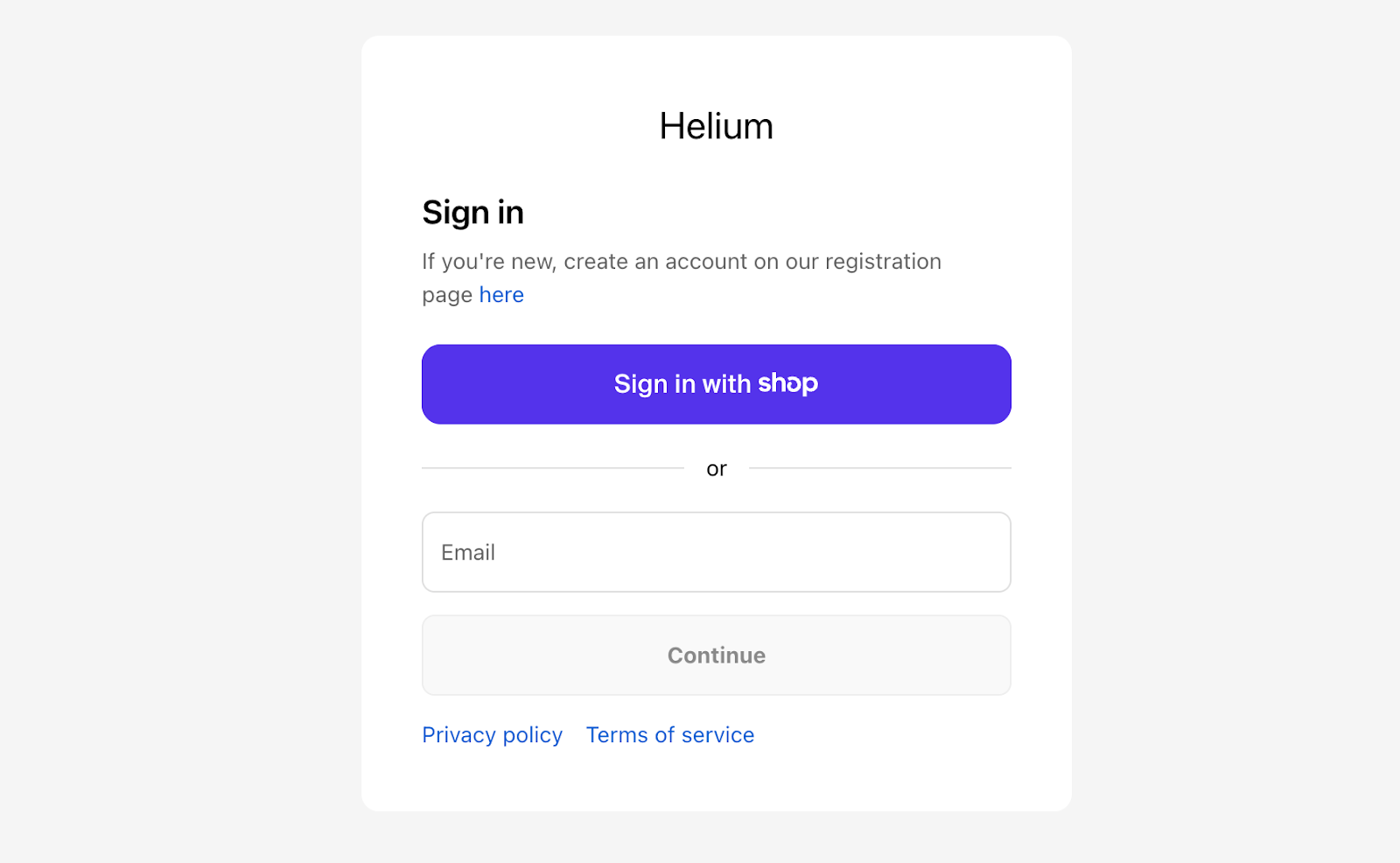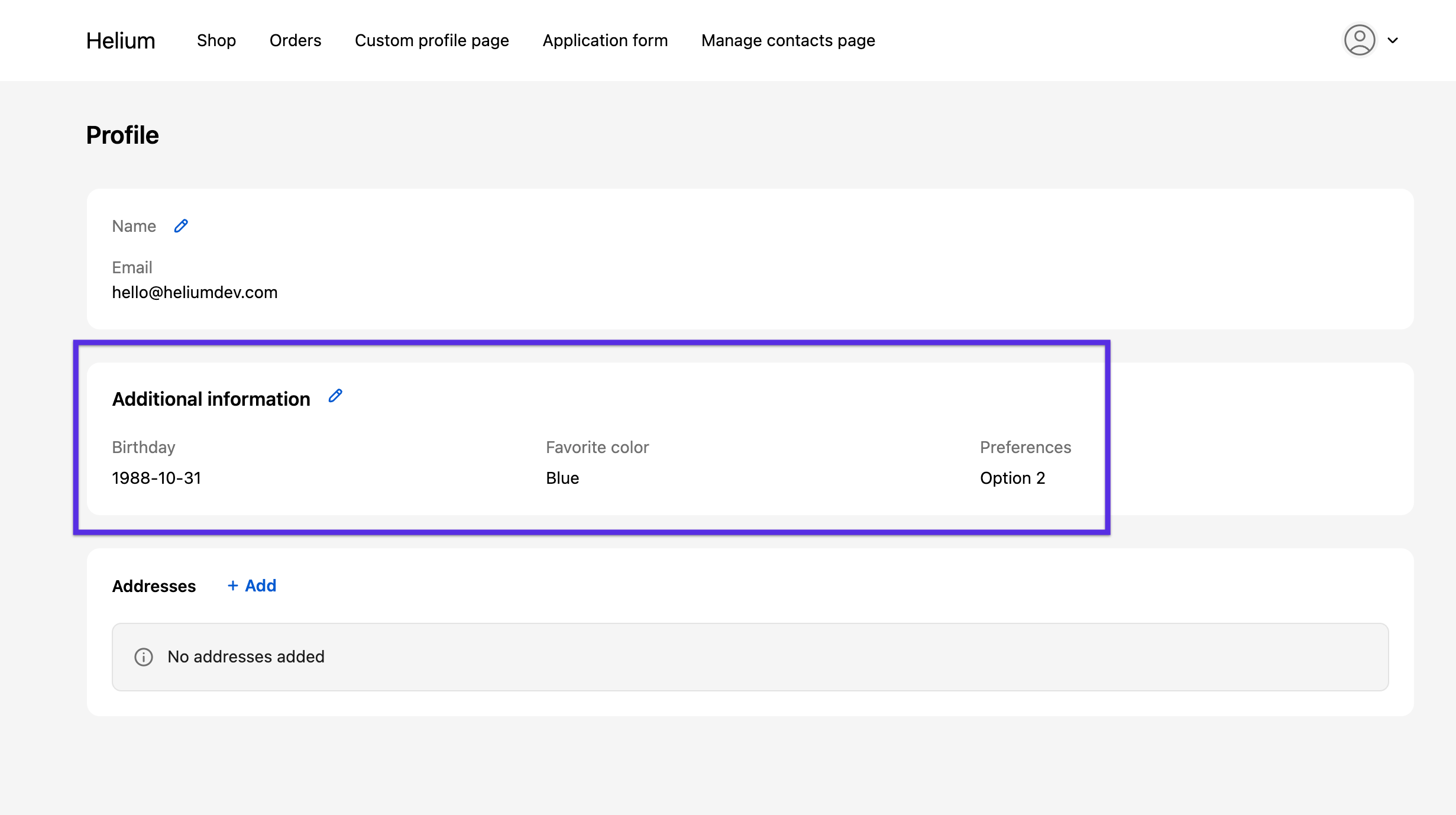3 Tips to Streamline Customer Registration with Shopify’s New Customer Accounts
Optimize your Shopify customer accounts registration process to improve clarity, reduce friction, and collect more customer data

Shopify’s new customer account system is gaining traction, but still needs some help to make it great
A smooth sign-up process is the first step to building a strong relationship with your customers. When shoppers can easily create an account, they’re more likely to return, track their orders, and become loyal fans of your brand. However, Shopify’s default customer account registration can sometimes be a point of friction.
Fortunately, with a few adjustments, you can create a clearer and more welcoming registration experience. Here are three tips to help you optimize your Shopify customer sign-up flow.
Tip 1: Clarify your sign-in page text
Out of the box, Shopify’s sign-in page can be a little ambiguous. The page is used for both signing in and creating a new account, but the default text doesn’t always make that clear. Customers might land on the page and think it’s only for existing users, causing them to abandon their attempt to register.
You can easily fix this by editing your theme’s text to be more specific.

How to edit your theme text:
- From your Shopify admin, go to Online Store > Themes.
- Find your current theme, click the “…” button, and select Edit default theme content.
- Use the search box to find the heading text for “Sign in”. Look for fields like “Customer accounts” and “Sign in step one.”
- Change the title from “Sign in” to something like “Sign in or Register”.
- You can also adjust the subheading to guide new customers, for example: “New to our store? Enter your email to create an account.”
This small change makes the page’s dual purpose obvious, reducing confusion for new customers.
Tip 2: Use a dedicated registration page
While clarifying the text on the default login page helps, another solution is to create a separate, dedicated page just for registration. This gives you more space to welcome new customers, explain the benefits of creating an account, and ask for any information you need upfront using a clear registration form.
You can build a custom form using an app like Shopify Forms (free) or for more advanced features like custom fields and conditional logic, our own Customer Fields app.
Once your registration page is ready, you can guide customers there directly from the default sign-in page. Simply edit the subheading text to include a link.

How to add a registration link:
- Follow the same steps as above to Edit default theme content.
- Find the field for “Subheading with sign in options.”
- Add an HTML link to your text. For example: “
If you're new, create an account on our registration page <a href="https://your-store.com/your-registration-page">here</a>.”
Note: Even with a separate registration page, customers can still technically create a basic account on the default sign-in page using only their email. If you need to strictly require additional information from every single customer, you may need a more robust access control solution. Learn how to accomplish this with the Customer Fields and Locksmith apps here
Tip 3: Collect more information after sign-up
Asking for too much information at once can scare potential customers away. A long registration form is a major cause of abandoned sign-ups. Instead, make the initial registration quick and easy, and then gather more details later. This approach is called progressive profiling.
You can collect additional customer information right inside their account portal after they’ve registered. Using an app like Customer Fields, you can add a custom form to the customer account page. This allows you to ask for birthdays, preferences, or any other data that will help you create a more personalized experience.

To encourage customers to fill out their profile, you can even add a banner to the top of their orders page—the first page they see after logging in—prompting them to complete their profile information. This ensures they see the request without it being a barrier to their initial registration.
To learn more about the app’s account extension forms, check out our help documentation.
By fine-tuning your registration process, you can remove friction, gather valuable customer data, and start every new customer relationship on the right foot.
Supercharge Your Shopify Customer Accounts
Ready to build the registration and customer account forms mentioned in this article? Our app, Customer Fields, makes it easy to add custom forms, collect more data, and reduce sign-up friction. See how it works.
Get Started with the Customer Fields app